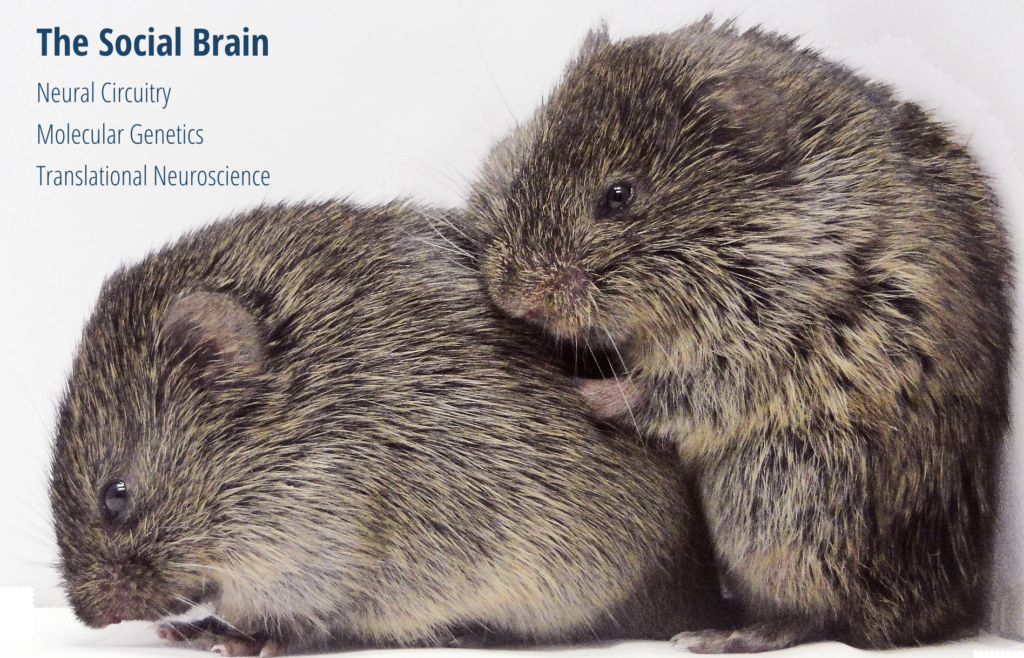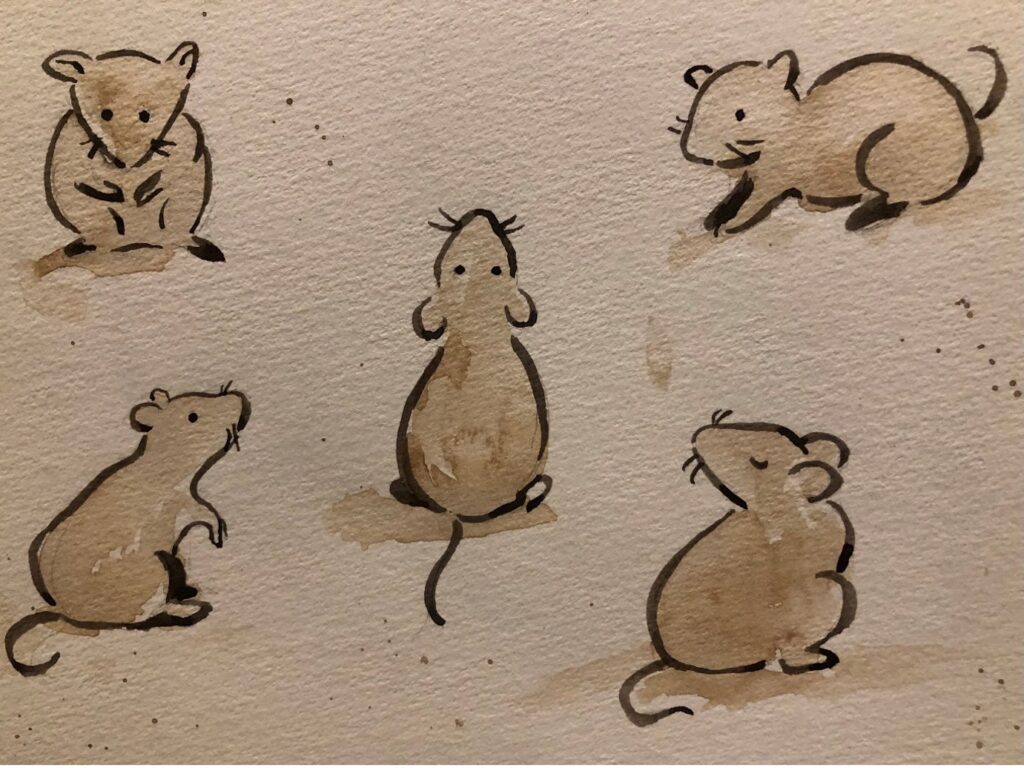Post and artwork by Jasmine Loeung, undergraduate in Psychology pursuing an Interdisciplinary Neuroscience minor at Portland State University. Jasmine is a research technician in the Sleep and Health Applied Research Program (SHARP) Lab at the Portland Veteran’s Affairs Medical Center and Oregon Health & Science University.
“Nothing has such power to broaden the mind as the ability to investigate systematically and truly all that comes under thy observation in life.”
— Marcus Aurelius
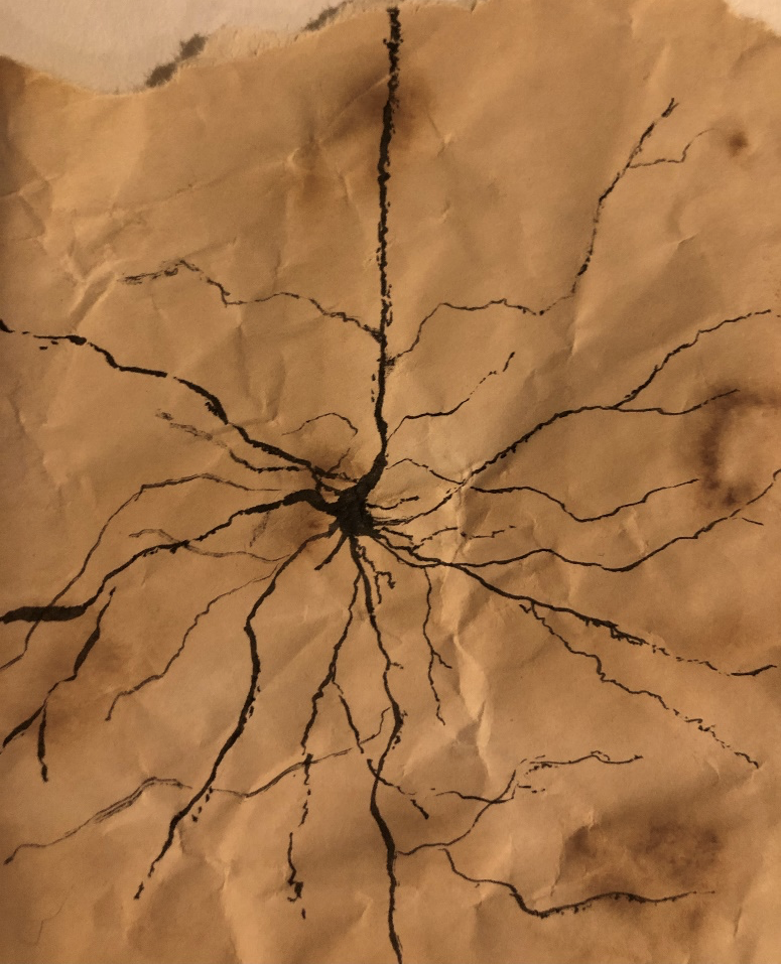
I recently became a research technician in Dr. Miranda Lim’s lab in the Sleep and Health Applied Research Program (SHARP) at the Portland Veteran’s Affairs Medical Center and Oregon Health & Science University. I’ve had the privilege of being a part of a talented multidisciplinary team.
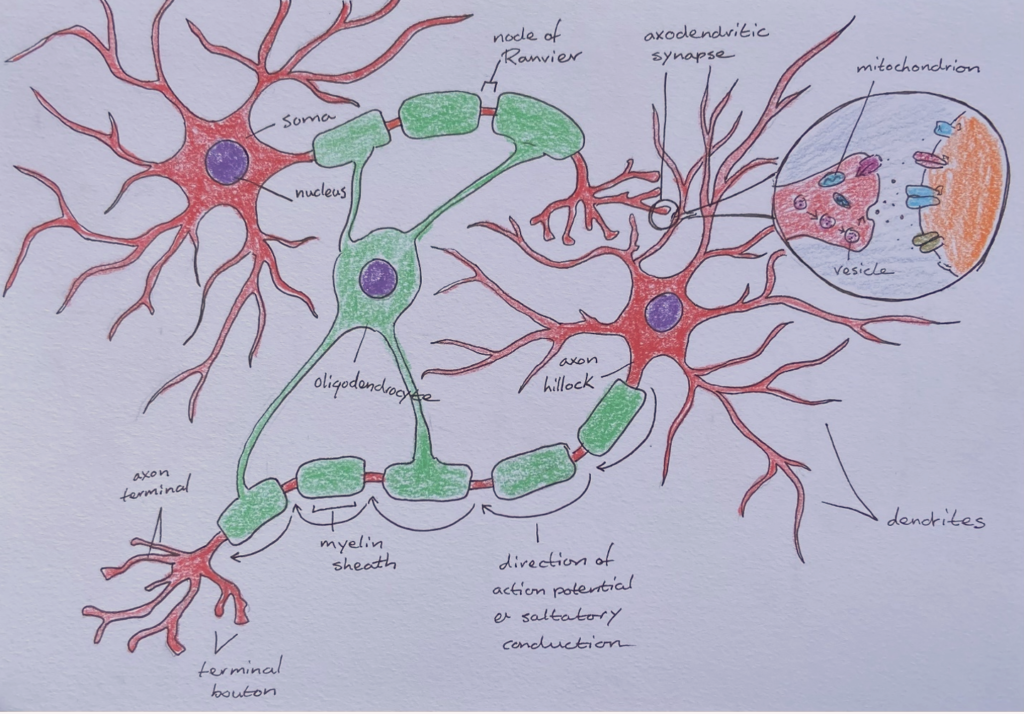
The SHARP lab is involved in many fascinating projects, examining “how sleep affects the brain across the lifespan in health and disease.” A variety of studies are investigating traumatic brain injury (TBI), PTSD, neurodevelopmental disorders, and neurodegenerative diseases as they relate to cognition, social development, and both mental and physical health.

IMAGE SOURCE: Portland VA Medical Center
LEARN MORE: Noggins in Nod: The science of sleep
LEARN MORE: NIH Physiology, Sleep Stages
LEARN MORE: Somnology (SLEEP) Encore with Dr. W. Chris Winter (From Ologies podcast by Alie Ward)
LEARN MORE: Sleep Disturbances in Traumatic Brain Injury: Associations With Sensory Sensitivity
Translational Research
There are two sectors within Dr. Lim’s lab — preclinical (animal research) and clinical (human research) — which is great for learning about bi-directional translational studies.
Translational studies are those in which research in one area can inform research, understanding, and clinical practice in another. At SHARP, the rodent studies inform the human studies and vice versa.
I love that there is talk between human and animal research, with each swapping ideas and fostering a multidimensional lens. In the lab, I’ve had the wonderful opportunity to be involved in animal research, studying environmental enrichment in prairie voles.
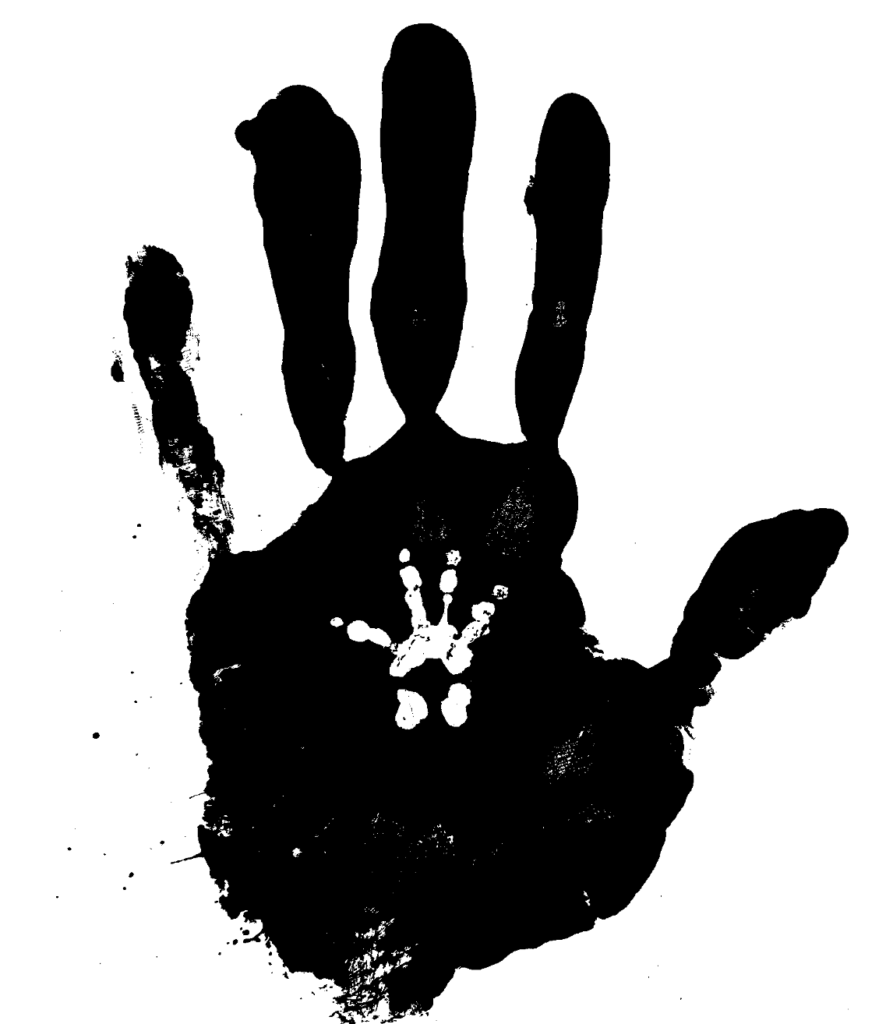
LEARN MORE: What are Clinical Trials and Studies?
LEARN MORE: What is Animal Research?
LEARN MORE: What is Translational Research?
LEARN MORE: Translational Medicine
LEARN MORE: Figure Illustrating Bidirectional Translational Research
Pairing for life
But why prairie voles? If you have no idea what kind of creature voles are, no worries. I had to do some research when I first heard about these furry little critters too!
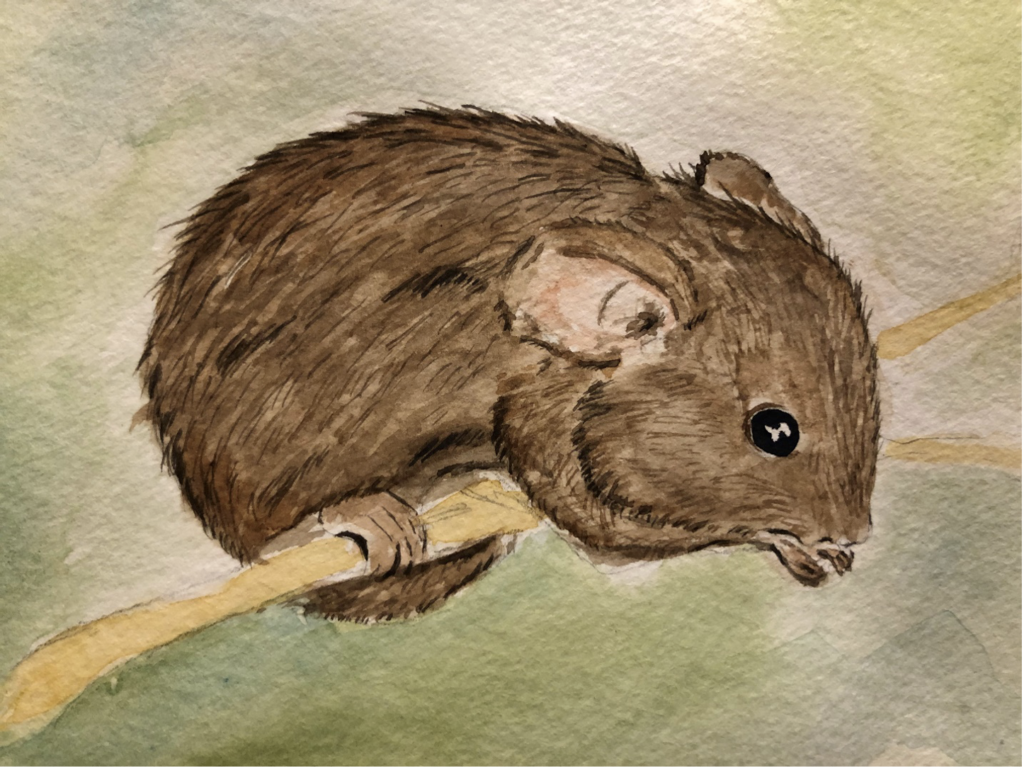
To picture a vole, think of a more robust-looking and extra furry mouse.
Prairie voles (Microtus ochrogaster) are a type of rodent found in eastern and central North America, living in alfalfa, bluegrass, and tall grass fields. Voles are used in research due to some unique traits, particularly since many of their social behaviors are comparable to humans.
One of these characteristics — and probably the one they are most known for — is that they are socially monogamous, meaning that they pair for life. Interestingly, only about five percent of mammals are known to have this trait.
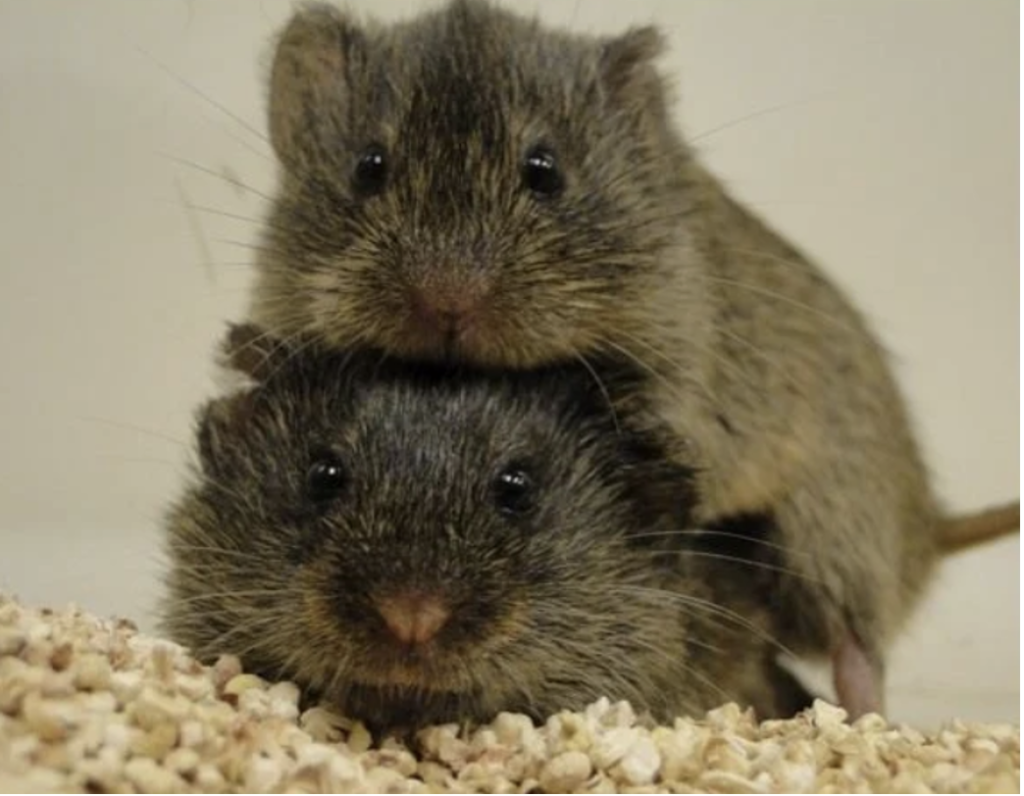
IMAGE SOURCE: Prairie Vole
This picture is not property or affiliated with PVARF/OHSU
Prairie voles naturally form pair bonds with a single mate, selectively demonstrating affiliative behavior and mating preferences (though this can differ somewhat from animal to animal). They also provide bi-parental care, with both parents contributing to raising their offspring. Some may even “adopt” offspring that are not their own.
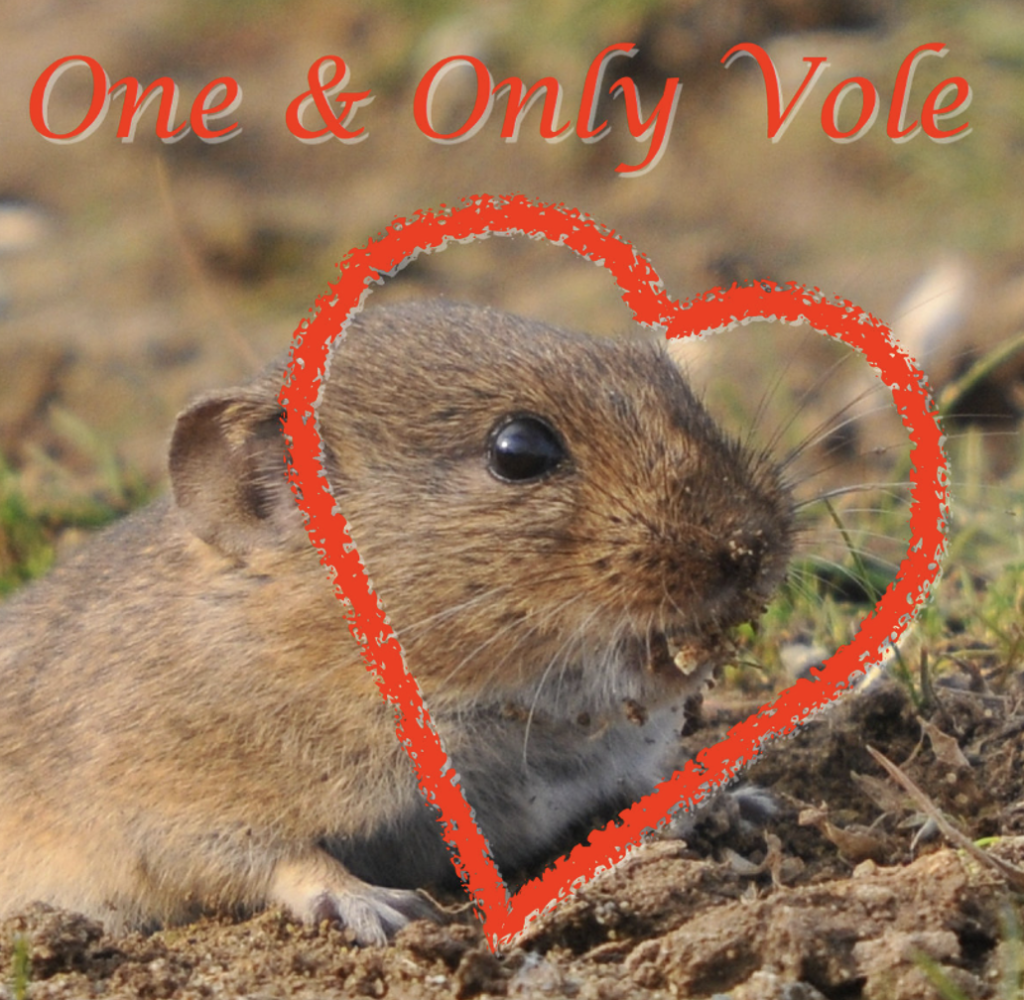
IMAGE SOURCE: One and Only Vole (song by Monty Harper, inspired by prairie vole research!)
This picture is not property or affiliated with PVARF/OHSU
Another fascinating social behavior that voles have is their ability to communicate using ultra-sonic vocalization. One study found that this form of communication is especially prevalent in vole pups when separated from their mother, with younger voles more apt to use ultrasonic vocalization and in greater frequency ranges than older pups.
LEARN MORE: Maturation of Social-Vocal Communication in Prairie Vole (Microtus ochrogaster) Pups
Many of these behaviors are exclusive to prairie voles, compared to other rodents and even other mammals. In the figure below, I have highlighted some of the characteristics as described in the Neuroscientist’s Guide to the Vole (basically the article to read for “Vole Research 101”).
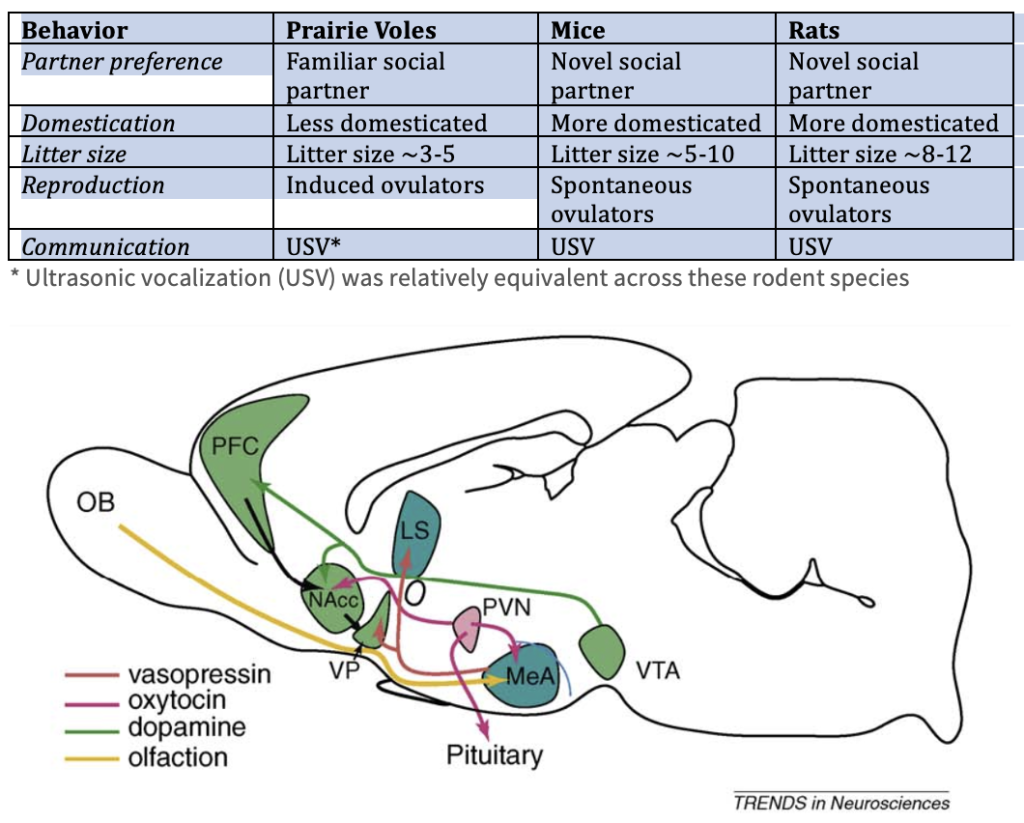
IMAGE SOURCE: The prairie vole: an emerging model organism for understanding the social brain
LEARN MORE: Neuroscientist’s Guide to the Vole
Prairie voles also have some unique aspects in their brain composition, with differences in the distribution of receptors for hormones, neuropeptides, and neurotransmitters. There are differences in dopamine receptors and receptors for vasopressin and oxytocin, hormones that play important roles in social functioning. (Although there is an ongoing dispute about the precise role of oxytocin, which apparently has less of an impact on pair bonds than originally thought).
LEARN MORE: Oxytocin and Social Relationships: From Attachment to Bond Disruption
LEARN MORE: The neural mechanisms and circuitry of the pair bond
Voles also have a larger auditory cortex than other rodents. Another noteworthy difference is in the organization of their somatosensory cortex—with the development of this region and others (i.e., the prefrontal cortex, prelimbic, and anterior cingulate) largely dependent on early life experiences.
LEARN MORE: Prairie Vole Model
LEARN MORE: Social Bonding
LEARN MORE: Monogamous Prairie Voles Reveal the Neurobiology of Love
Voles are pretty amazing, but they are still wild animals. In fact, they are often quite violent towards anyone other than their partner. It’s them against the world!
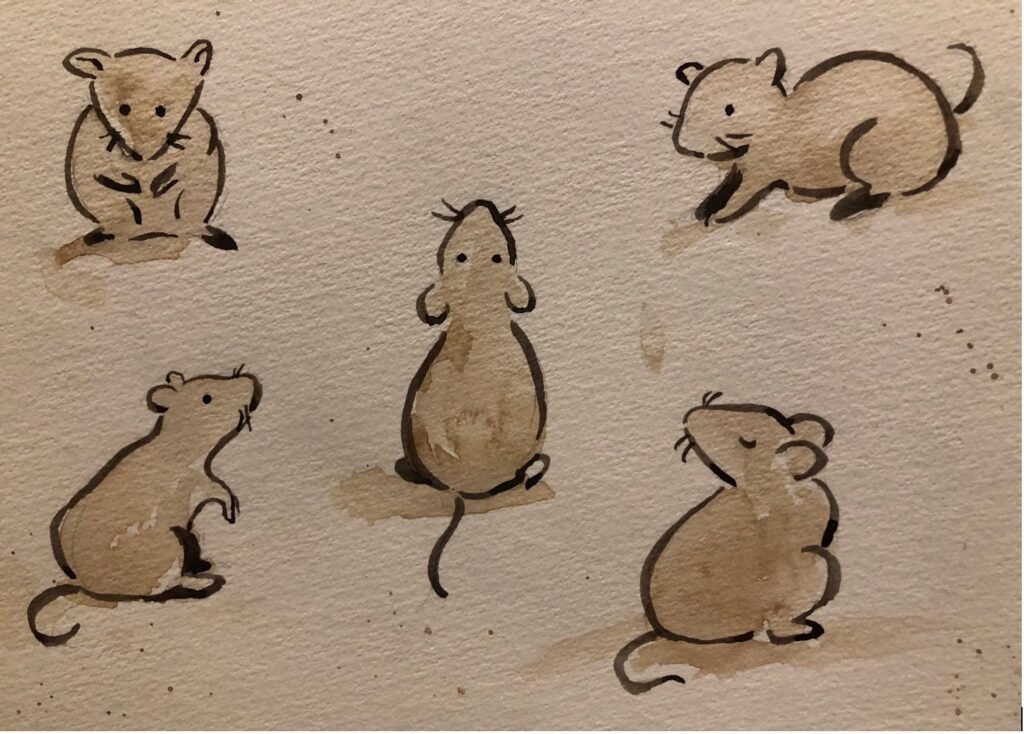
LEARN MORE: The prairie vole: an emerging model organism for understanding the social brain
LEARN MORE: Prairie Voles as a Model for Understanding the Genetic and Epigenetic Regulation of Attachment Behaviors
LEARN MORE: Helping behavior in prairie voles: A model of empathy and the importance of oxytocin
LEARN MORE: Neuropeptide Regulation of Social Attachment: The Prairie Vole Model
LEARN MORE: Individual differences in social attachment: A multi‐disciplinary perspective
LEARN MORE: Maturation of Social-Vocal Communication in Prairie Vole (Microtus ochrogaster) Pups
So, how are prairie voles used in research?
There are multitudinous ways, with many studies employing them as a model in social neuroscience research.
Studies on empathy, pair bonding, alcohol use, sleep, and more have used prairie voles as a model. Vole studies provide insight into the underlying neural mechanisms of social behaviors. In short, prairie voles may hold answers to problems with our own health and human relationships!
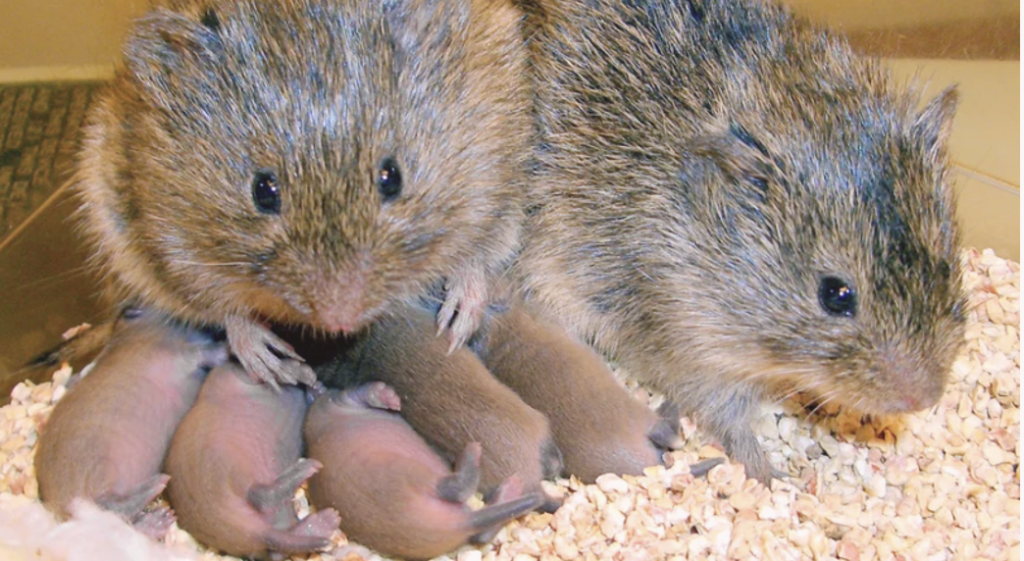
IMAGE SOURCE: Learning About Love From Prairie Vole Bonding
This picture is not property or affiliated with PVARF/OHSU
In the SHARP Lab, voles are studied in terms of sleep.
Currently, we are examining how and if environmental enrichment for the voles mitigates (reduces) disruption of sleep. In humans, the relationship between sleep and autism is complex, and many people with autism have a comorbid sleep disorder or other sleep-related challenges.
A study by Buckley et al. (2010) comparing children with autism, children with developmental delay, and children with typical development found that those with autism spent less time in REM sleep, which is an important factor in cognition and development. Other studies found a relationship between reduced REM and autism as well.
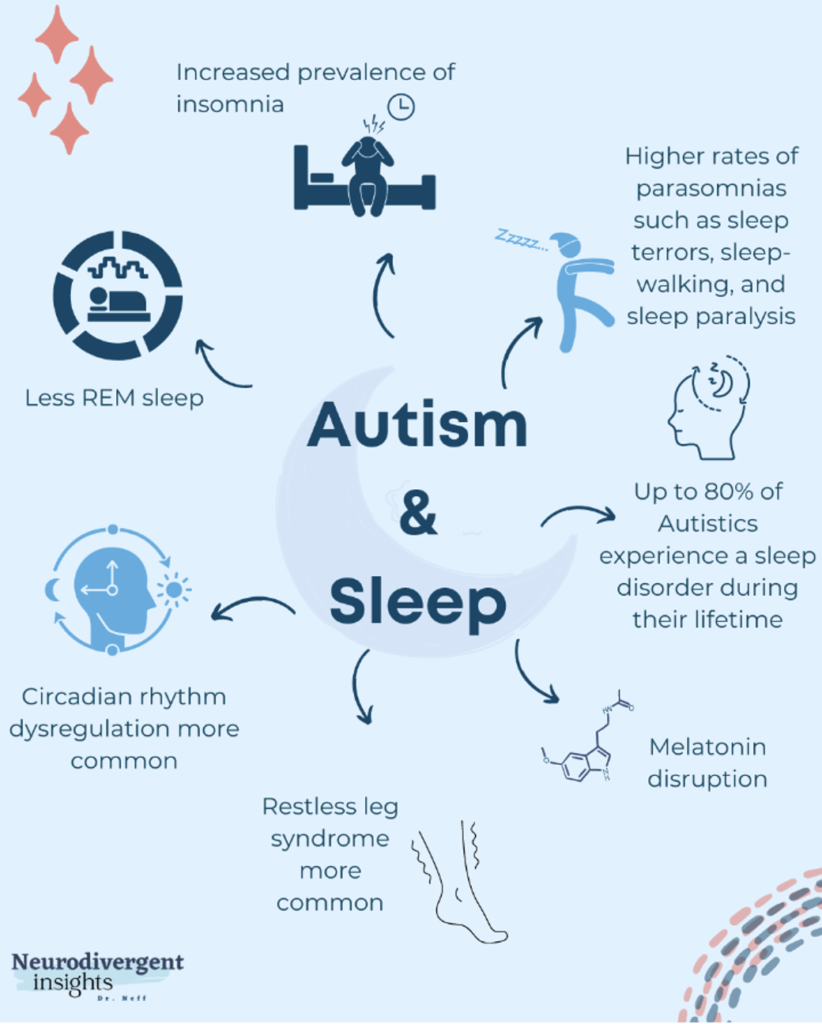
IMAGE SOURCE: Autism and Sleep
LEARN MORE: Autism Spectrum Disorder according to the CDC
The translational model for our study is inspired by studies of environmental enrichment and stimulation treatment for children with autism. Children with autism often have poor sleep early in life, and this may impact both social and sensorimotor functioning.
One study demonstrated that by stimulating the sensorimotor system and engaging in play behavior, some social symptoms of children with autism were improved. Our vole study seeks to understand this link, furthering the investigation of sleep and its relation to social and sensorimotor functions.
LEARN MORE: The Role of Sensorimotor Difficulties in Autism Spectrum Conditions
LEARN MORE: Sleep as a translationally-relevant endpoint in studies of ASD
LEARN MORE: Environmental enrichment as an effective treatment for autism: A randomized controlled trial
LEARN MORE: Environmental enrichment as a therapy for autism: A clinical trial replication and extension
LEARN MORE: Sleep as a translationally-relevant endpoint in studies of ASD
LEARN MORE: OHSU physician-scientist focuses on a good night’s sleep
Enriching environments
We use the partner preference test (PPT) to assess social functioning in voles, and to see if a better environment might improve behavior in voles that experienced disrupted sleep.
As previously mentioned, voles form pair bonds. In other words, they like to hang out with their partner rather than strangers. So, the PPT allows us to observe their social behavior and determine whether or not it is typical or dysfunctional. To explain, a male vole will be placed with a female for a duration of 24 hours, which allows them to bond. Next, this male is placed in a cage with three chambers, with the female he was housed with on one side of the chamber and a female who is a stranger on the other. The male’s behavior is then scored based on which chamber he spends time in as well as what he does there; i.e., his social behaviors, including huddling, aggression, and mating.
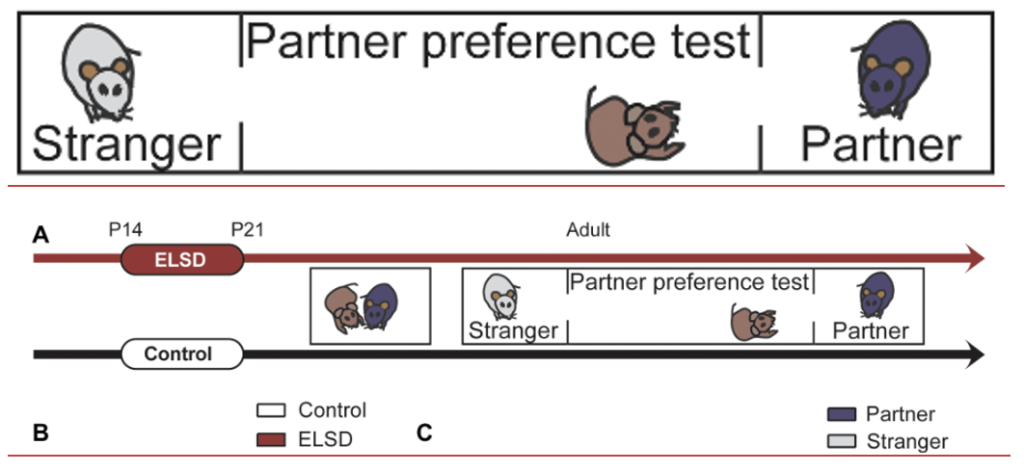
The figure depicts the setup of the PPT as it was performed in the study by Jones et al. (2019). Similar to the current study, certain voles underwent early life sleep disruption from P14 to P21 (a week prior to weaning) while others did not have any disrupted sleep.
IMAGE SOURCE: Early life sleep disruption has long lasting, sex specific effects on later development of sleep in prairie voles
In our study, there are four groups of voles: (1) a control that did not have early life sleep disruption (ELSD) and was raised in a typical environment, (2) a group that did have ELSD and was also raised in a typical environment, (3) a group that did not have ELSD and was raised in an environmentally enriched environment and (4) a group with ELSD that was raised in an environmentally enriched environment.
For the voles, environmental enrichment consisted of pellets, and toys — like a toilet paper roll — where they can explore, burrow, and play. The voles especially love the paper rolls as they spend hours huddled inside and also shred it to use for nesting material.
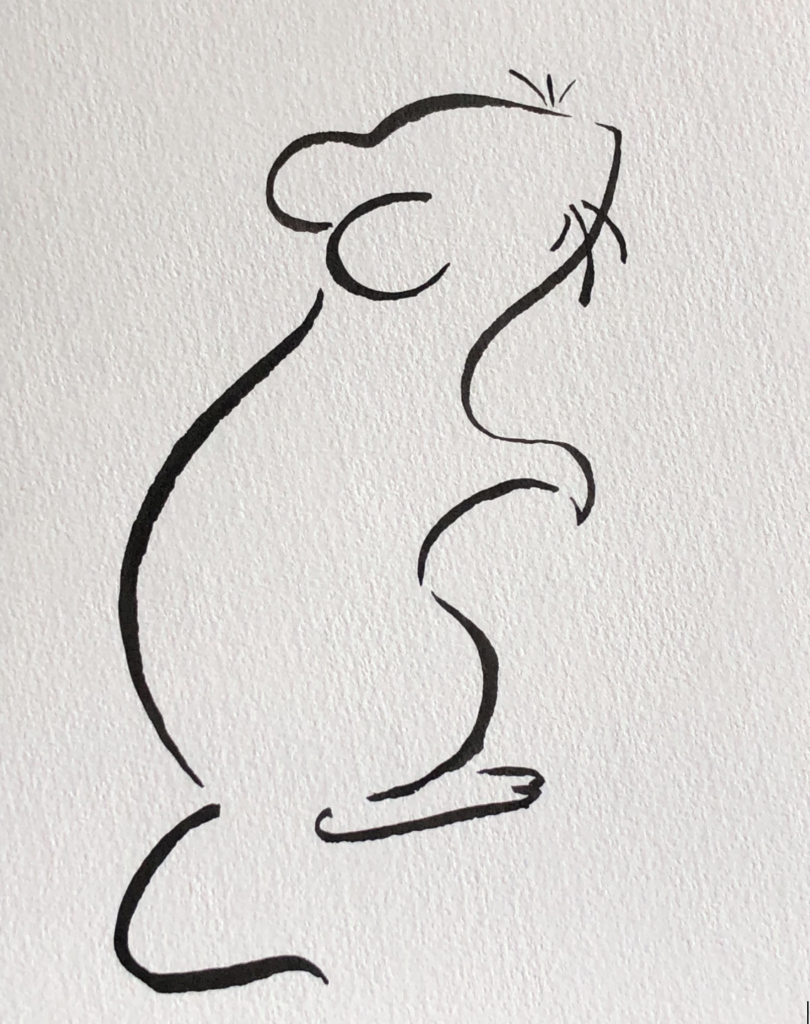
After assessing these behaviors and the time spent in each chamber, we will be able to analyze the data and determine whether or not environmental enrichment had an effect on social functioning in the voles.
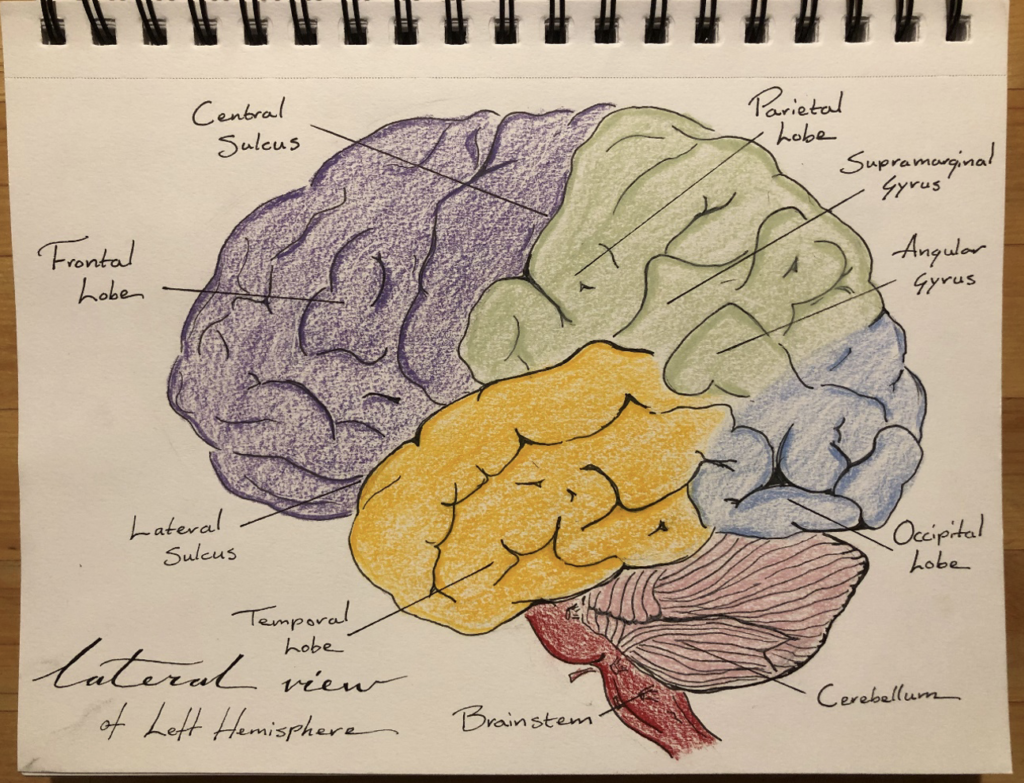
“Research is formalized curiosity. It is poking and prying with a purpose.”
— Zora Neale Hurston
Thank you SHARP!
I’ve had a wonderful experience in research so far and enjoy the constant learning in the lab. In addition to studying voles and scoring behavior, I have received essential training, from information about animal research and practices (such as learning the three R’s of animal research) to understanding the safety practices and plans.
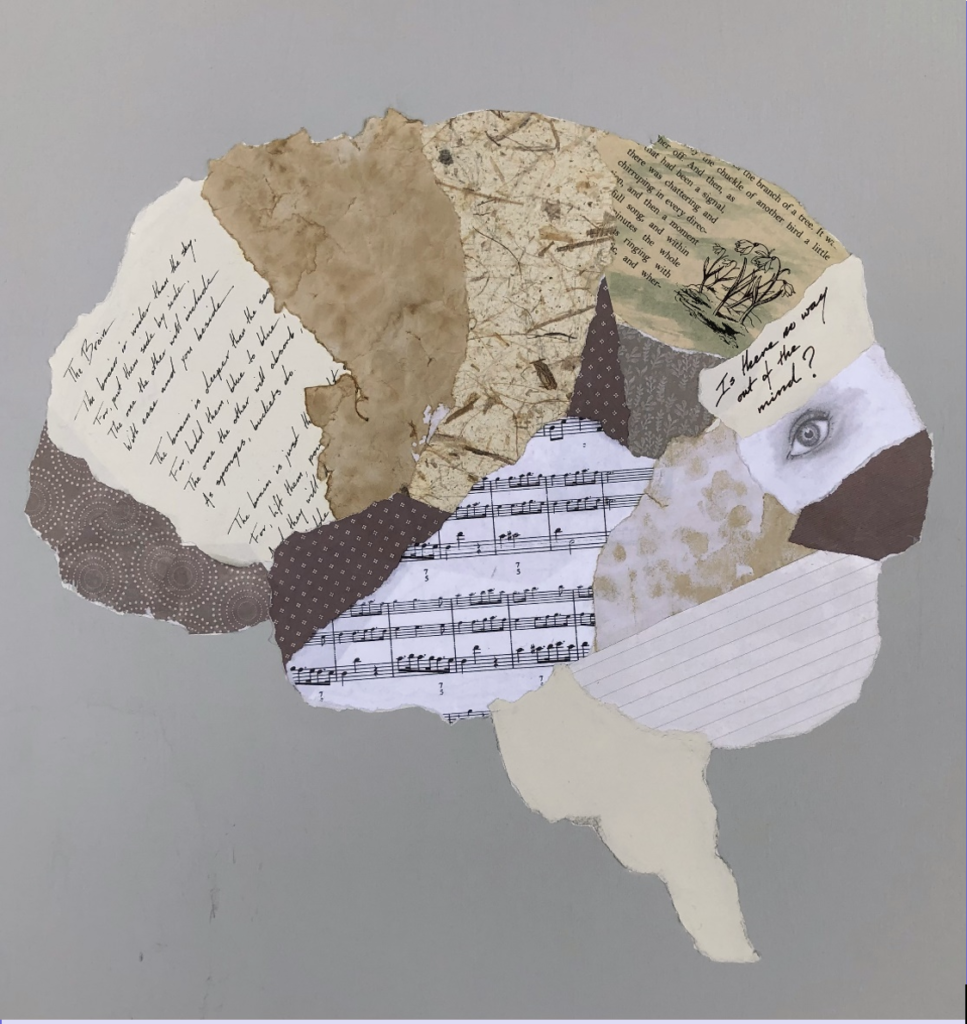
GET INVOLVED: Research Opportunities
Research is a constant journey of discovery and ideas and I look forward to continuing.
LEARN MORE: Research Labs at OHSU
LEARN MORE: Volunteer Opportunities at OHSU
LEARN MORE: Portland VA Research Foundation (PVARF)
LEARN MORE: Undergraduate Research Programs at PSU
LEARN MORE: Child Language Learning Center
(Where I completed my undergraduate honors thesis)
Other labs studying prairie voles!
Donaldson Lab (Mechanistic basis for individual differences in behavior, advanced neurogenetic and circuit-level analysis, genes and environment)
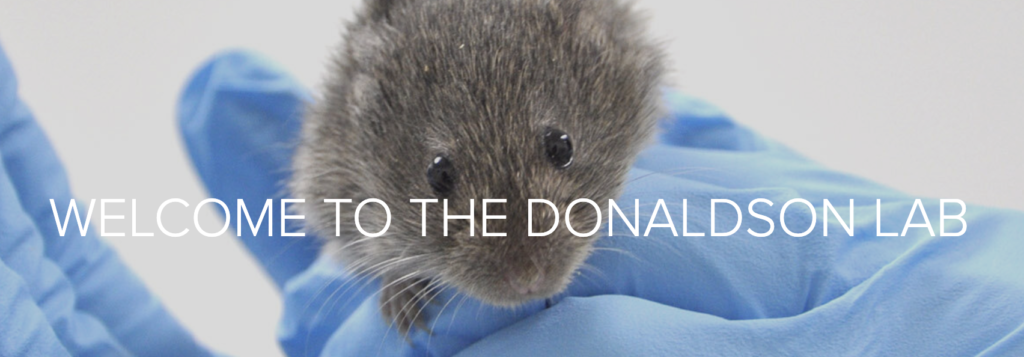
Ophir Lab (Individual differences in genes, brain and behavior; behavioral neuroendocrinology; comparative ethology; cognitive ecology; animal communication; social learning & cultural transmission)
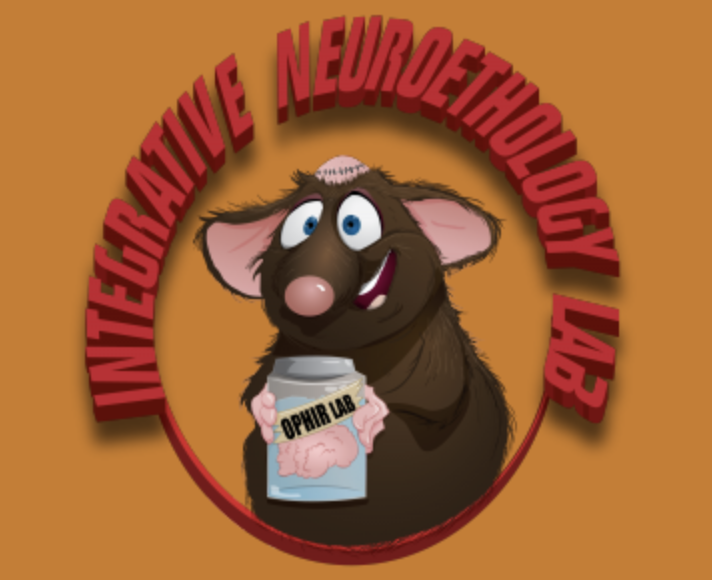
Phelps Lab (Animal behavior, genomics, social neuroscience, epigenetics, evolution)
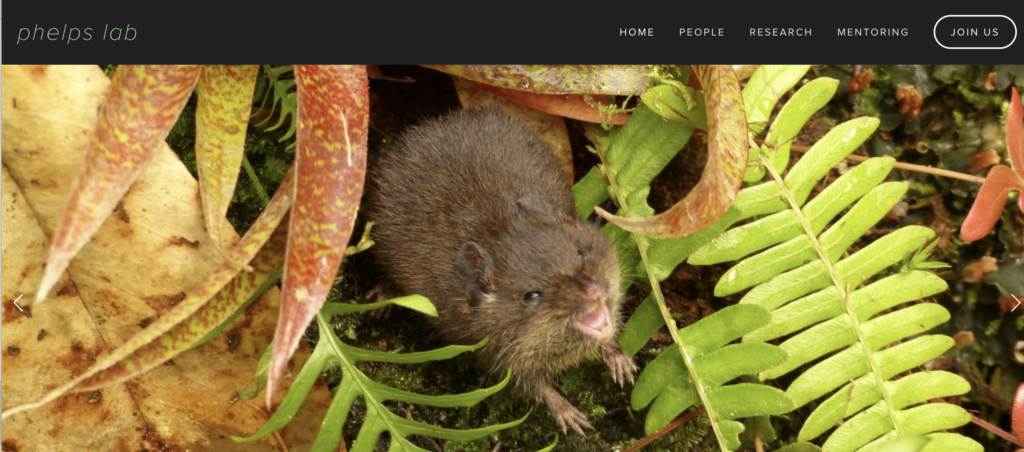
The Young Lab (The social brain, neural circuitry, molecular genetics, translational neuroscience)
